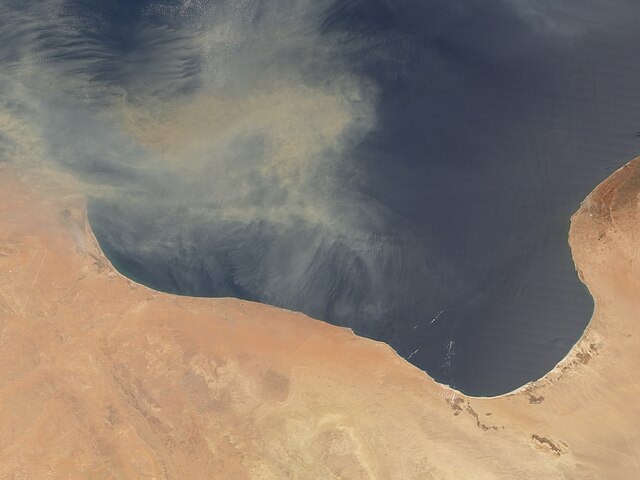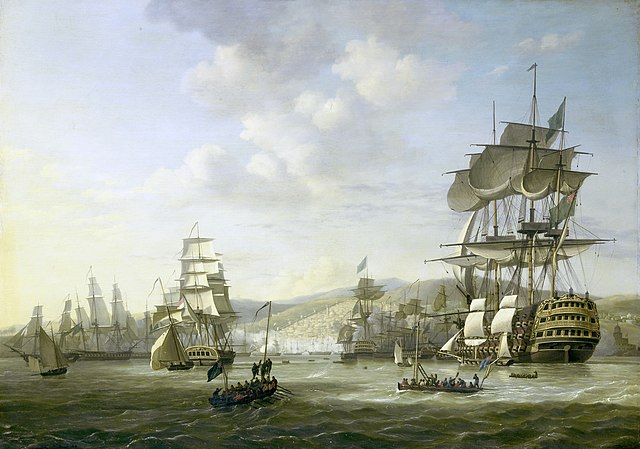The Gulf of Sidra (Arabic: خليج السدرة, romanized: Khalij as-Sidra, also known as the Gulf of Sirte (Arabic: خليج سرت, romanized: Khalij Surt, is a body of water in the Mediterranean Sea on the northern coast of Libya, named after the oil port of Sidra or the city of Sirte. It was also historically known as the Great Sirte or Greater Syrtis.
Satellite image of the Gulf of Sidra (2007)
British cruisers Cleopatra (making smoke) and Euryalus (foreground) moving into action during the Second Battle of Sirte in 1942
The Mediterranean Sea is a sea connected to the Atlantic Ocean, surrounded by the Mediterranean Basin and almost completely enclosed by land: on the north by Southern Europe and Anatolia, on the south by North Africa, and on the east by the Levant in West Asia. The Mediterranean has played a central role in the history of Western civilization. Geological evidence indicates that around 5.9 million years ago the Mediterranean was cut off from the Atlantic and was partly or completely desiccated over a period of some 600,000 years during the Messinian salinity crisis before being refilled by the Zanclean flood about 5.3 million years ago.
With its highly indented coastline and large number of islands, Greece has the longest Mediterranean coastline.
Greek (red) and Phoenician (yellow) colonies in antiquity c. the 6th century BC
The Battle of Lepanto, 1571, ended in victory for the European Holy League against the Ottoman Turks.
The bombardment of Algiers by the Anglo-Dutch fleet in support of an ultimatum to release European slaves, August 1816






